Delosperma frutescens
Delosperma frutescens L.Bolus
Family: Aizoaceae
Common names: dwarf tree mesemb, shrubby delosperma (Eng.); dwerg-boomvygie (Afr.)
Introduction
The dwarf tree mesemb is a long-lived, slow-growing, ascending, much branched, tree-shaped mesemb with greyish, smooth stems, succulent greyish-green leaves and white flowers that are pollinated by insects, producing small fruiting capsules. It is endemic to the Eastern Cape, where it grows on mountain slopes and river gorges, often on cliffs. Easily propagated by cuttings and best for dry gardens, planted on embankments, or in containers.
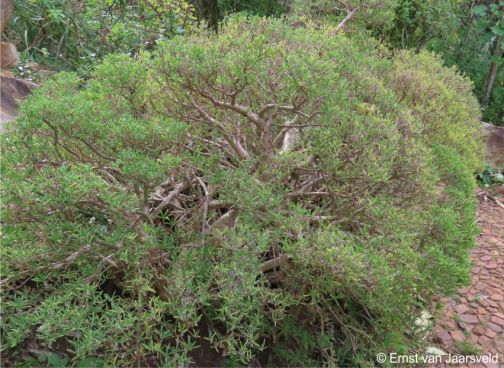
Fig. 1. The Delosperma frutescens specimen growing in the Matthews Rockery during the rainy season, in July 2023. This plant was originally collected at Quora Bridge, Eastern Cape by Walter Wisura in 1973.
Description
Description
The plants are much-branched shrublets up to 120 mm high. The roots are fibrous. The young branches minutely papillate, becoming woody, terete, grey, internodes 10–30 mm apart. Leaves in opposite pairs (decussate), ascending spreading, sometimes crowded owing to short internodes, somewhat trigonous, dorsiventrally flattened, but with distinct keel, elliptic-obovate, 10–15 × 3–4 mm; surface minutely papillate; apex rounded, apiculate.
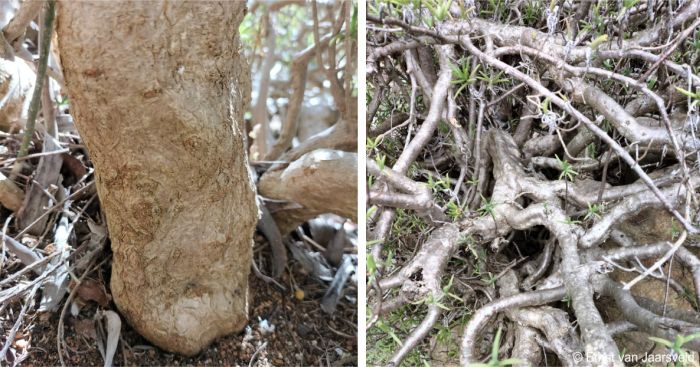
Fig. 2. The main stem and branching architecture of the Delosperma frutescens plant in the Matthews Rockery; the branches become smooth and light grey.
Flowers in cymes of up to 3, 16 mm diameter; pedicels short, 1–4 mm long. Receptacle top-shaped, stigma 2 mm long. Petals linear, 5–6 × 1 mm, white. Capsule top-shaped 3-4 mm in diameter, bearing broad, expanding keels and valve wings. Seed pale brown. Flowering time is mainly from spring to summer (September to October southern hemisphere).
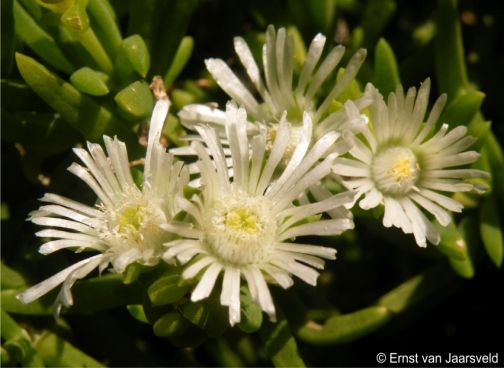
Fig. 3. Delosperma frutescens in flower in the Matthews Rockery.
Conservation Status
Status
Least Concern (LC). Delosperma frutescens isidespread and not threatened according to the Red List of South African Plants.
Distribution and habitat
Distribution description
Delosperma frutescens occurs in the Eastern Cape, widespread, from Graaff-Reinet in the north-east to the Machadu District and north-east to the Kei River in the coastal region. Its habitat consists of steep embankments to near vertical cliffs, in shady kloofs, and river valleys. Plants are firmly rooted in crevices, and in shallow soil on ledges. The temperature is moderate, the average daily maximum about 25°C and average daily minimum for the region about 15°C. Winters are cool and frost is absent. Rainfall occurs mainly in summer but towards the west winter rainfall is increasingly experienced and averages between about 400–500 mm per annum. The plant grows at an altitude of 550–1 100 m. The associated vegetation consists of the Albany Thicket Biome (Groot Thicket) as well as the Savanna Biome (Valley Bushveld) along the Kei River in the east (Mucina et al. 2005).
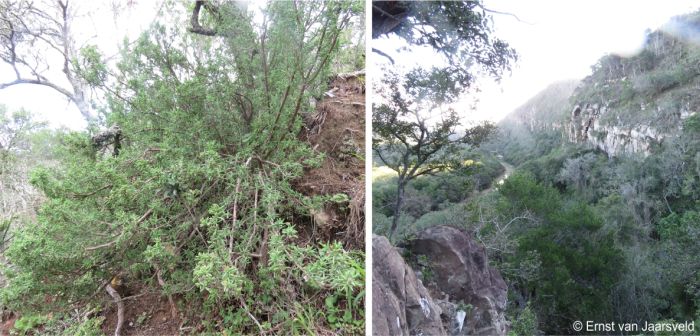
Fig. 4. Delosperma frutescens growing in habitat, the sheer cliffs along the Keiskamma River, seen during a rubber canoe expedition in 2019.
Along the Kei River plants occur on Beaufort Shale cliffs and associated cliff dwellers include: Crassula cultrata, Crassula orbicularis, Curio talinoides, Pelargonium acraeum , Encephalartos altensteinii, Encephalartos princeps, Aptenia cordifolia, Euphorbia triangularis, Crassula pellucida subsp. marginalis, Anacampseros lanceolata, Portulacaria afra, Crassula lactea, Crassula multicava, Bulbine latifolia, Haemanthus albiflos and Pyrrosia africana. Here Delosperma frutescens often grows in dense stands on ledges of shale bedrock.
Derivation of name and historical aspects
History
Delosperma frutescens was named by Louisa Bolus, Mesembryanthemaceae specialist from the Bolus Herbarium, in 1929, in her Notes on Mesembryanthemum and allied genera from plants collected by Allan Dyer on steep slopes at Plutos Vale, near Machadu (Grahamstown) in the Eastern Cape. Louisa Bolus named it Delosperma frutescens due to its shrubby nature, the eptithet frutescens means ‘shrub-like’. The type specimen is unfortunately without fruiting capsules, which are so diagnostic in mesemb classification.
Delosperma frutescens in fact represents the largest known species of Delosperma and is thus appropriately named by Bolus. D. frutescens is a relatively slow growing species and a plant established by Walter Wisura in the Matthews Rockery, Kirstenbosch National Botanical Garden, in 1973 has now reached the size of about 850 mm tall, more than 1 m in diameter, and the stem diameter at the base of the plant about 90 mm in diameter tall and resembles a dwarf tree. Walter Wisura collected his plant at the Quora Bridge in 1973(accession no 391/73). Walter Wisura succeeded Harry Hall as horticulturist in charge of the succulent section at Kirstenbosch between 1967 and 1976.
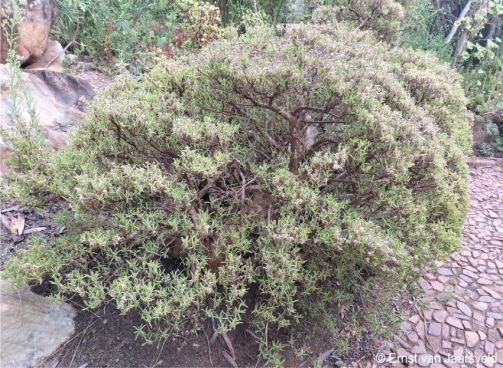
Fig. 5 The Delosperma frutescens specimen in the Matthews Rockery during the dry summer, collected from Quora Bridge, Eastern Cape and planted by Walter Wisura in 1973.
The author found this plant on rubber canoe expeditions with colleagues, associated with cliffs along the Keiskamma River and the lower Kei River in the east where it was always associated with cliffs or steep rocky slopes.
N.E. Brown named the genus Delosperma, in the Garden Chronicles in 1925. The name is derived, from Greek: delos, meaning ‘visible’, and spermameaning ‘seed’ and pertains to the open capsule from which the loculi roofs are absent, thus exposing the seed. Delosperma represents a large and diverse genus of more than 100 species within the family Aizoaceae (formerly Mesembryanthemaceae), ranging from dwarf short-lived succulent leafed plants, flat-growing to scrambling and shrubs a metre tall. Most however are confined to South Africa in the Eastern and Western Cape. Species of Delosperma are also found in the grasslands and highlands of southern and eastern Africa and the Arabian Peninsula.
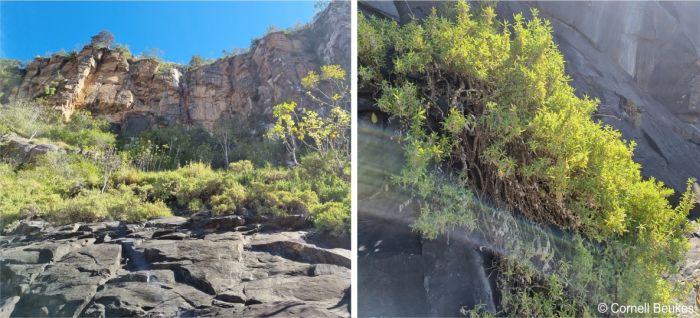
Fig. 6. A large group of Delosperma frutescens growing on the sheer cliffs of the Lower Kei River growing with the Obetia tenas, giant nettle, seen during the rubber canoe expedition in April 2023 (Photos Cornell Beukes).
Ecology
Ecology
Delosperma frutescens is a long-lived, slow growing perennial. Plants grow firmly rooted in crevices and on ledges. The thickset tree-like stems and succulent leaves enable the plant to withstand periods of drought and its habitat allows it to avoid predation by mega herbivores.. On cliffs the stems can become pendent and the nodes longer. In full sun the leaves are often crowded. The white flowers are produced on new growth in few-flowered cymes towards the branch tips. The white colour is conspicuous, maximising visibility, especially in shady kloofs, for successful pollination by insects. Flowering time is from spring to summer. The slower growing, long-lived mesembs do not flower in profusion compared to the floriferous, short-lived mesembs, however they usually flower over a longer period and in this case spring to summer. The fruiting capsules open with rain and the seeds are dispersed by rainwater, settling and germinating in crevices. The capsules open with moisture and the seeds are washed from the capsules by the rain drops establishing in a crevice. Stems of Delosperma frutescens will root where they come into contact with the soil.
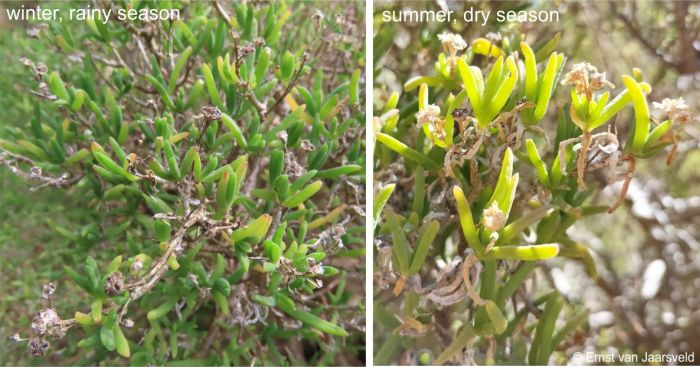
Fig. 7. The leaves and fruiting capsules of Delosperma frutescens during the moist winter (left) and during the dry summer season (right).
Uses
Use
Delosperma frutescens does well in cultivation but outside its habitat, it is best grown under controlled conditions in a greenhouse. Best for thicket, Succulent Karoo and Mediterranean climate gardens, grown on steep embankments, rockeries or balconies. The nature of its growth makes it ideal for bonsai culture.
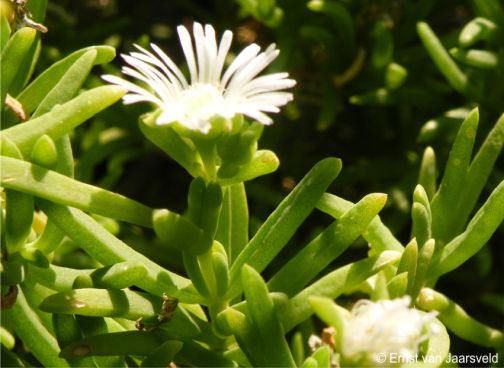
Fig. 8. Delosperma frutescens in flower in the Matthews Rockery.
Growing Delosperma frutescens
Grow
Delosperma frutescens is easily grown can can be propagated with ease by seed or cuttings. It also adapts well to containers in full sun or dappled shade. The plant can be trained into a beautiful bonsai. Although the plant is easily grown, when planted, it should be grown in areas away from aggressively growing species, the competition often result in its deterioration. Outside its habitat, it is best grown under controlled conditions in a greenhouse. The plant is very adaptable, grows both on poor and richer soils (mineral poor acidic sandstone soil as well as richer shale soils).
Propagate from stem cuttings taken in winter, spring or summer, planted in a sandy or gravelly soil mixture. Cuttings of about 8–12 cm length is ideal. Remove the lower leaves and plant the stems to a depth of about 3–4 cm. Keep moist until well rooted. Rooting during the warmer months will take place within 3 weeks.
Plants grow well in a general succulent mixture, such as 2 parts sand, 1 part garden loam and 1 part peat or well broken down compost, but good drainage is always essential.
Sow seed in spring to autumn in shallow trays in a sandy soil. Cover the seed with a thin layer of sand (1-2 mm) and keep moist. The seeldings can be pricked out once large enough to be handled.
References
- Bolus, H.M.L. 1929. Notes on Mesembryanthemum and allied genera. Part 2. University of Cape Town.
- Clarke, H. & Charters, M. 2016. The illustrated dictionary of southern African plant names. Flora & Fauna Publications Trust, Jacana, Johannesburg.
- Hartmann, H.E.K. 1991. Mesembryanthema. Systematics, biology and evolution of some South African taxa. Contributions from the Bolus Herbarium. No. 13: 75–157.
- Hartmann, H.E.K. 2001. Aizoaceae A–E. In Eggli, U. & Hartmann, H.E.K. (eds.), Handbook of succulent plants. Springer. Heidelberg, New York, etc.
- Mucina, L. & Rutherford, M.C. (eds) 2006. The vegetation of South Africa, Lesotho and Swaziland. Strelitzia 19. South African National Biodiversity Institute, Pretoria.
- Raimondo, D., Von Staden, L., Foden, W., Victor, J.E., Helme, N.A., Turner, R.C., Kamundi, D.A. & Manyama, P.A. (eds) 2009. Red list of South African plants. Strelitzia 25. South African National Biodiversity Institute, Pretoria.
- Van Jaarsveld, E.J. 2010. Waterwise gardening in South Africa and Namibia. Struik, Cape Town.
Credits
Ernst van Jaarsveld
Kirstenbosch National Botanical Garden (Retired)
Babylonstoren Farm (Current)
Extraordinary senior lecturer and researcher,
Department of Biodiversity and Conservation, University of the Western Cape
March 2024
Plant Attributes:
Plant Type: Shrub, Succulent
SA Distribution: Eastern Cape
Soil type: Loam
Flowering season: Spring, Early Summer
PH: Acid, Neutral
Flower colour: White
Aspect: Full Sun, Morning Sun (Semi Shade)
Gardening skill: Easy
Special Features:
Horticultural zones








Rate this article
Article well written and informative
Rate this plant
Is this an interesting plant?
Login to add your Comment
Back to topNot registered yet? Click here to register.